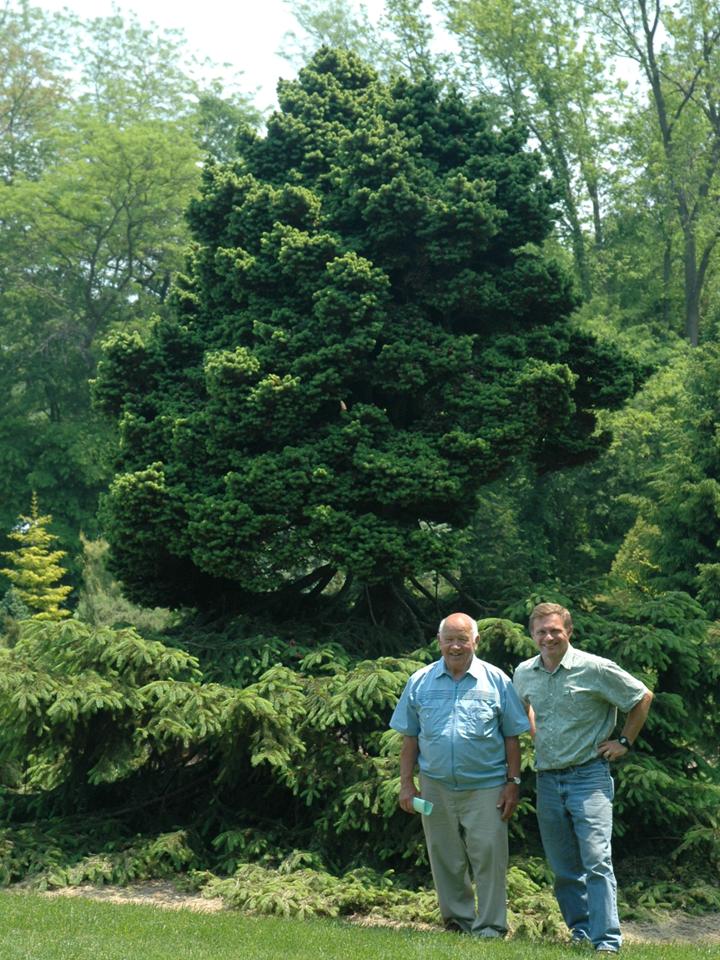Recently, Rebecca Finneran, an MSU Extension Educator from the Grand Rapids area sent me a cool photo. The tree is a large Norway spruce near the Kent country Extension office.

This is a great example of witch’s broom. Witch’s brooms are growth anomalies that occur on various trees, most commonly conifers, Brooms can be caused be a variety of factors including diseases, aphids, environmental stress and random mutations. In some cases the growth defect is only present when the casual agent, say, a pathogen is present. In others, however, the growth mutation can be propagated by grafting scion wood from the witch’s broom onto a regular rootstock. In fact, this is the origin of many forms of dwarf and unusual ornamental conifers. Because of this, brooms are often a prized commodity and ‘Broom hunting’ is an active past-time for conifer enthusiasts such as members of the American Conifer Society. ACS members that find their first brooms are sometimes referred to as ‘Baby broomers’. Broom hunters are a focused lot and have been known to screech to a halt on major interstate in their relentless pursuit of conifer conversation pieces. So keep an eye out for brooms – and broom hunters!

With the late Chub Harper and the ‘Merrill broom’ tree at Hidden Lake Gardens, Tipton, MI
Bert, what IS the ‘Merrill broom’ tree? It’s the coolest looking plant!
(BTW, the image capture validation thing is a little iffy; it takes a few tries to get it to give me a number to type, and often even then it fails. Can this be fixed, or is it just my computer?)
Deb, re: your last question. It is a nuisance, it can’t be fixed, but if we don’t have it on we get flooded with spam. So just grit your teeth and keep trying to submit. It affects all of us. (At least it doesn’t delete the comment!)
Love the photos. Rebecca’s broom and the photo of Bert and Chub!
Here is my broom photo.
http://plant-quest.blogspot.com/2008/07/new-plants-under-noses.html